Fashion eCommerce stores face unique challenges. In a landscape of deep discounts, fast fashion, and tons of competition, even the most successful brands need to work hard to stay ahead.
While the top stores are already a step ahead because they have great brand recognition and loyal customers that love them, one major mistake is costing them: They’re not taking full advantage of customer reviews.
Why is this so important? Uncertainty is the biggest killer of online sales.
Reviews and other forms of user-generated content, like customer photos and ratings, create the social proof that instills confidence and trust in shoppers.
In fact, data on the fashion eCommerce industry found that 27.5% of shoppers won’t purchase from a new brand because of lack of trust, while 41.5% of shoppers cite missing reviews as their reason not to buy.
When thousands of brands are competing for the same sales, smart branding and strategic fashion eCommerce marketing means taking every opportunity to quell uncertainty.
Small to medium-sized businesses are quickly taking over market share from enterprise brands who don’t always understand how to appeal to online audiences.
This study focuses on enterprise-level fashion brands that have successfully captured the Millennial market and beyond — and it breaks down how they did it, and where they can improve. Millennials have grown up in a world of reviews and are most likely to both write them and react to them when making purchasing decisions.
To get a more balanced view, this report addresses top apparel brands across certain subsectors, like lingerie, fast fashion, eCommerce-only, etc.
Here’s an in-depth look at how 5 of the most successful fashion brands are using reviews and how you can learn from them to improve your customer content strategy.
Top Lingerie Brand: Victoria’s Secret
Victoria’s Secret is the most successful lingerie brand in the global market, and it also performs the best out of all the stores examined. Not only do they offer the option to sort their products by top rated, but they also display star ratings underneath each product on category pages.
Once you click through to a particular product, the rating is prominently displayed above the fold, and below, you can read all the reviews. This gives shoppers all the information they need to “add to bag” once they’ve zeroed in on a product they like.
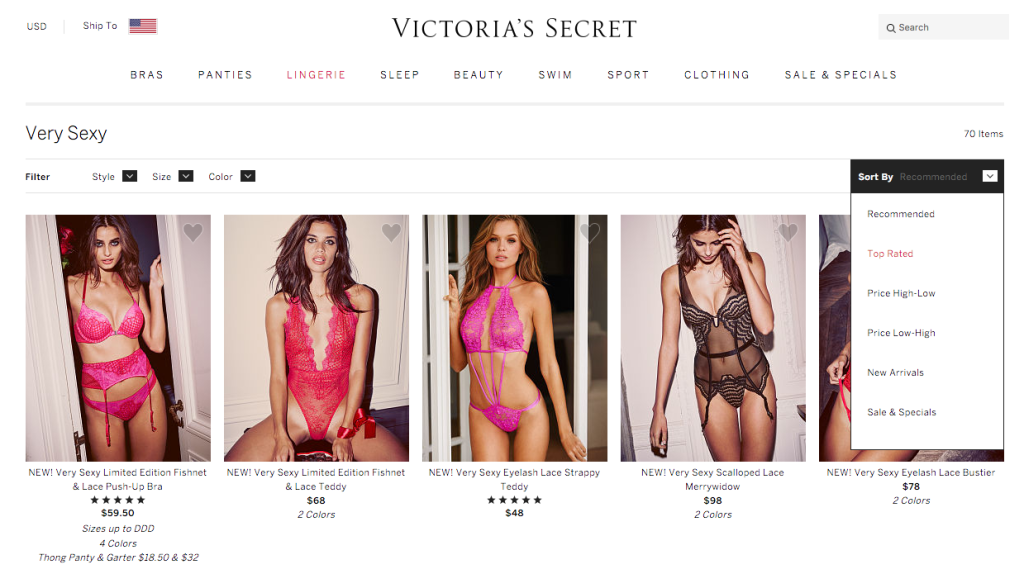
Since fashion eCommerce brands work so hard to get customer reviews, it makes sense to display them front and center as well as at several customer touchpoints.
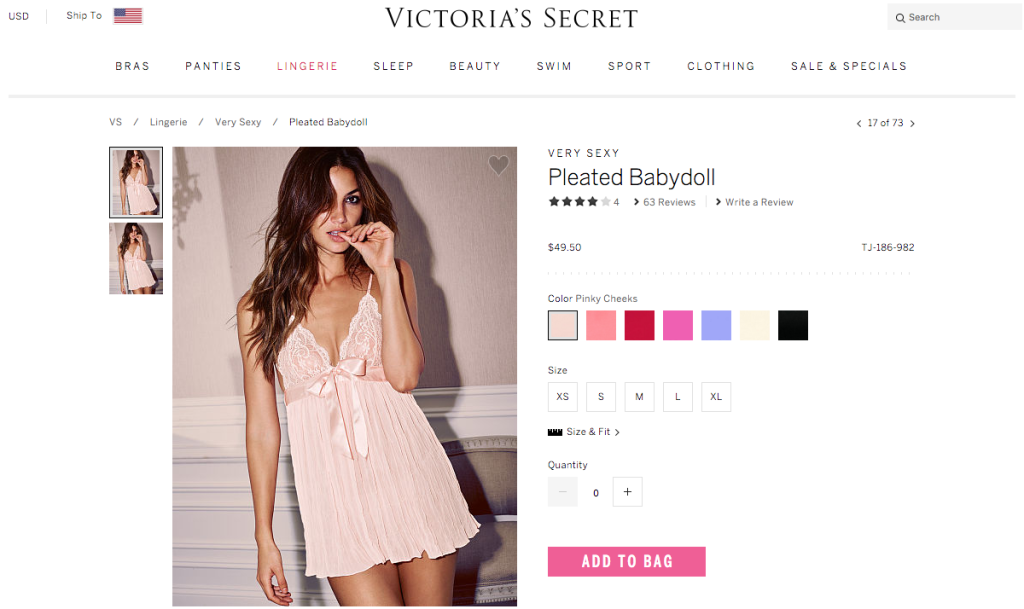
Now let’s take a look at the amount of reviews they have per product. This number impacts sales because a single five-star review means less to shoppers than 150 four-star reviews.
In a sampling of 10 top-rated Victoria’s Secret products in their bras section, each bra had an average of 33.8 reviews. This is pretty good, considering enterprise fashion brands struggle to get their many products reviewed. The only downside is the review distribution was pretty uneven – two of the items had 120 reviews, while others had only 5.
Victoria’s Secret stands out among other fashion eCommerce sites in this report by including a “verified purchaser” tag alongside some of the reviews. This inspires trust by indicating that those reviewers actually bought the product they’re writing about.
Victoria’s Secret is doing best out of all the enterprise stores sampled. However, they may not be doing enough to keep competition at bay.
According to Business Insider, Adore Me, an eCommerce lingerie store, is quickly beginning to rise up against Victoria’s Secret as a real competitor.
Brands like Adore Me that are taking advantage of reviews demonstrate a growing trend of mid-to-enterprise sized eCommerce businesses taking over traditional brick-and-mortar stores. Top fashion brands often lack the ability to keep up with the times and leverage customer feedback effectively.
While Victoria’s Secret is doing a great job with on-site reviews, they’re not doing so well off site, especially when it comes to social. They aren’t sharing complete reviews to social, asking customers to share reviews on social, or using reviews in social ads. Integrating customer testimonials in social marketing expands a brand’s reach and brings new, highly qualified customers.
- Reviews on product pages: Yes
- Option to sort by top rated: Yes
- Reviews displayed next to product: Yes
- Avg. reviews per product among top rated: 33.8
- CTA to leave a review: Yes
- Trust badges: Yes
Top Mid-to-High End Brand: Free People
Free People is on the high-end of the Millennial price spectrum, so reviews are absolutely critical for convincing their customers to pay the premium. Unfortunately, they don’t make their customer feedback clear enough.
There is a drop-down menu option to sort by top rated, but there is also a selectable menu option labeled “Customer Favorites.” Since these produce different results when clicked, it is unclear to shoppers how Free People quantifies what makes an item a favorite.
In the Customer Favorites section, the item listed first has no reviews and no ratings. This doesn’t instill confidence that these items really reflect customer choices, and it leaves shoppers guessing as to the criteria used to select them.
Is it by number of orders? Number of social shares? There’s no way to know.
Also, there’s no sign of reviews on the category pages, which is an opportunity missed to encourage shoppers to click through to any specific product.
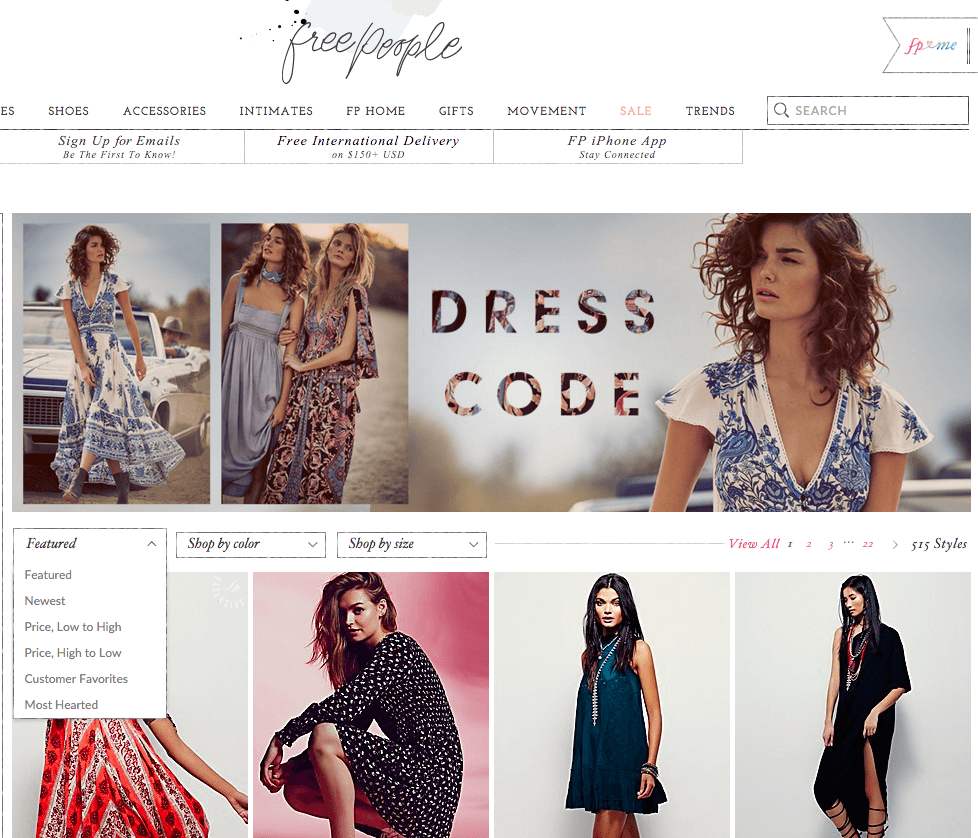
Within the product pages, they do better. They have pretty even review distribution: While their top 10 products in Customer Favorites only had 6.7 reviews on average, the distribution was much more even than Victoria’s Secret.
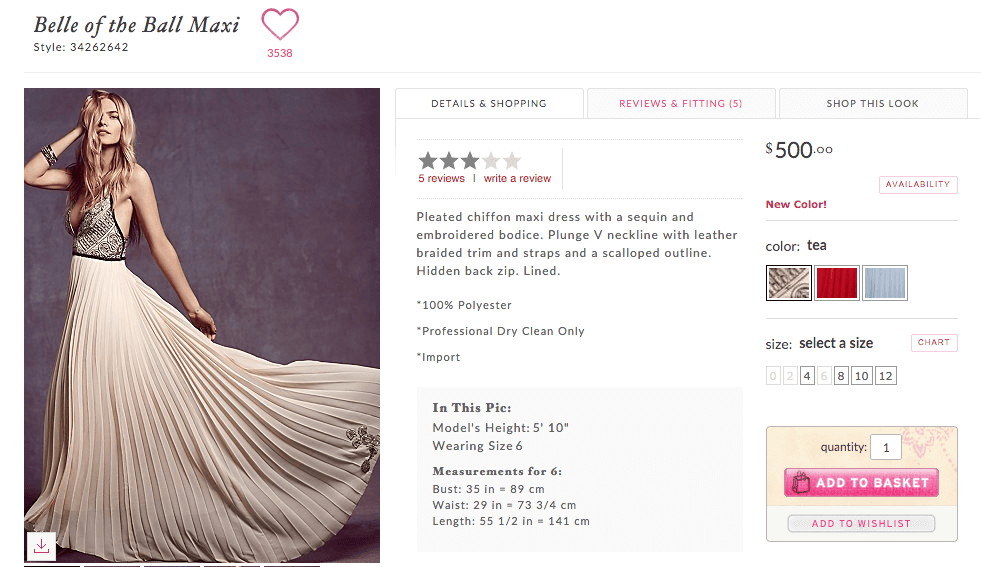
One important takeaway from Free People is that while they set a good example for even review distribution, they aren’t taking full advantage of their price point to drive reviews. The data shows that more expensive products get more reviews. As a high-end brand, Free People could be getting many more reviews than they are.
- Reviews on product pages: Yes
- Option to sort by top rated: Yes
- Reviews displayed next to product: Yes
- Avg. reviews per product among top 10 rated: 6.7
- CTA to leave a review on page: Yes
- Trust badges: No
Top Fashion eCommerce Brand: ASOS
ASOS performed the worst of all the stores, which was surprising, considering that they’re an online-only business that is popular internationally. Their reviews strategy seems to be non-existent: they have absolutely no reviews on their products.
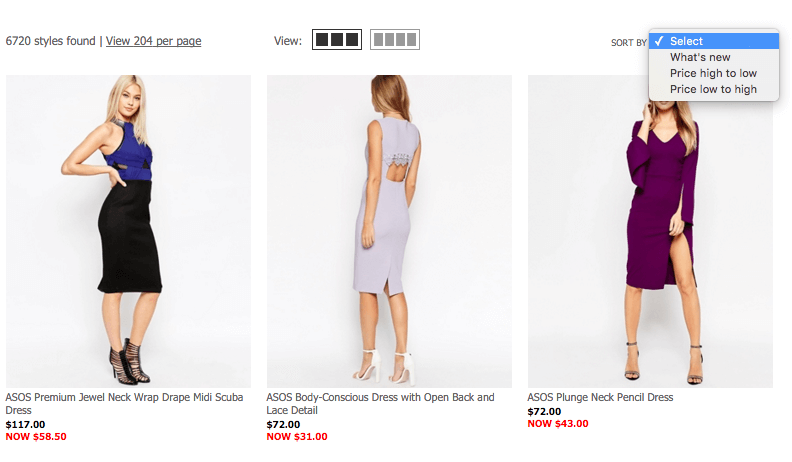
One reason for this is possibly because ASOS sells thousands of products from over 850 labels, so they are less invested in working to get other brands product reviews.
Although ASOS may be able to get away with this because they are a successful, established online fashion store with a large amount of satisfied shoppers, they’re hurting their business by missing out on the chance to convert new shoppers.
Reviews could allow ASOS to expand their audience and turn their current customers into brand advocates.
Also, by not having reviews, they’re putting their reputation at risk because they are still being reviewed – but on sites like Yelp and Trustpilot, where they can’t manage their reputation.


Because they don’t host reviews themselves, customer searches for “ASOS reviews” will lead potential shoppers to other pages. That’s a big mistake. Brands should never give up control of their online reputation, nor should they miss out on the SEO value of having all that customer content on site.
Despite the lack of reviews, ASOS has made a bit of an effort to include customer photos on site using their “AsSeenOnMe” gallery. Customers post photos on Instagram with the #AsSeenOnMe hashtag, and those photos then appear on corresponding product pages.
However, the display is far down the page, and product coverage is lacking, so the impact of the photo gallery is minimal.
- Reviews on product pages: No
- Option to sort by top rated: No
- Reviews displayed next to product: No
- Avg. reviews per product among top 10 rated: 0
- CTA to leave a review: No
- Trust badges: No
Long-Reigning Millennial Favorite: Urban Outfitters
Urban Outfitters is loved by Millennials, but they are hit or miss with reviews. Speaking from personal experience, I’ve definitely been deterred from purchasing products because of a lack of reviews.
While they do offer the option to sort by highest rated, even after choosing that option, there are no reviews on the category pages.
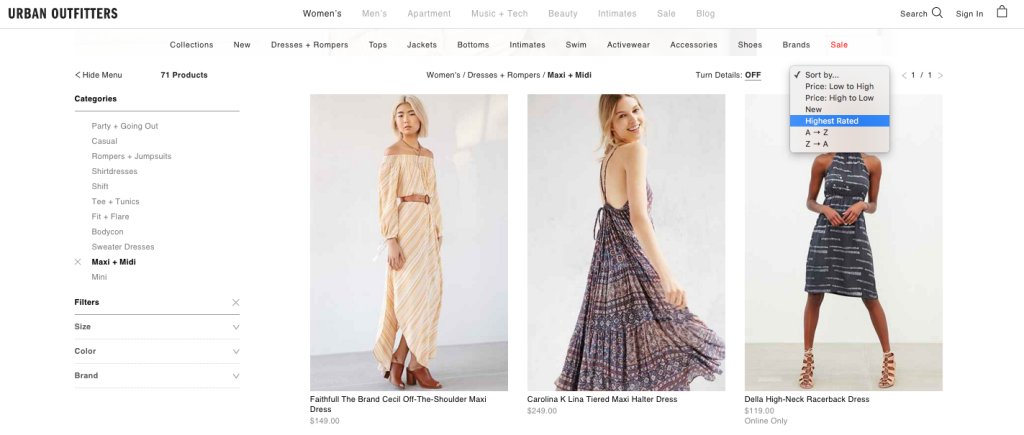
Within the product pages, they do list reviews, but at the bottom where it’s easy to miss. Additionally, they don’t take review distribution into consideration. So while a particular item may be one of the highest rated products, it might only have one review, which doesn’t boost customer confidence.
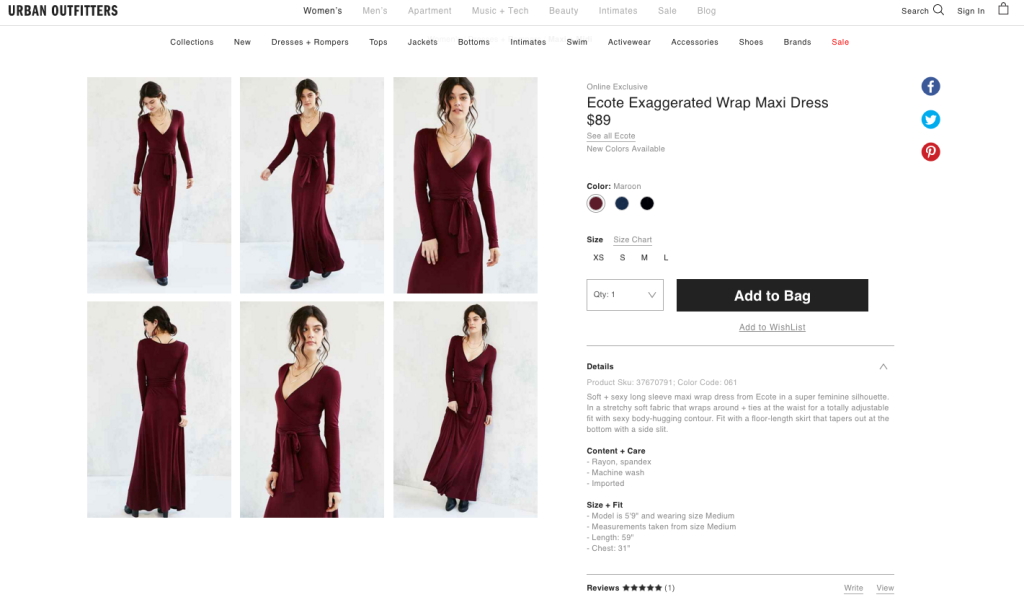
Many traditional brick-and-mortar sellers are struggling to keep up with fast-paced eCommerce businesses that have adapted to Millennials’ needs. As the internet has transformed how people shop, it’s vital that brands pay attention to the importance of social proof and earning customer trust.
- Reviews on product pages: Yes
- Option to sort by top rated: Yes
- Reviews displayed next to product: Yes
- Avg. reviews per product among top 10 rated: 1
- CTA to leave a review: Yes
- Trust badges: No
Top Fast Fashion Brand: Forever 21
Forever 21 is one of the leading fast fashion brands. It’s at an advantage because as a relatively new brand, it grew up in a time when user-generated content was already on the rise in marketing.
Forever 21 offers the option to sort by highest rated, but ratings aren’t displayed on category pages. Like Free People and Urban Outfitters, Forever 21 is missing out on the chance to encourage more customers to click through to product pages.
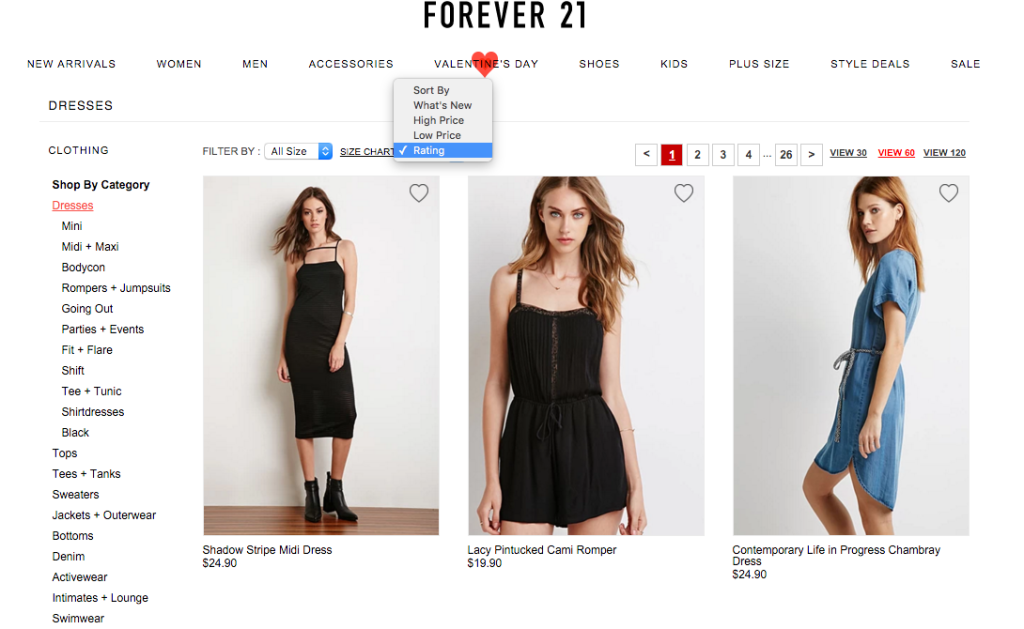
Forever 21 also misses opportunities on the product pages themselves: star ratings and reviews are displayed underneath other information, which makes them less noticeable. Additionally, some of their highest rated products don’t even have reviews.
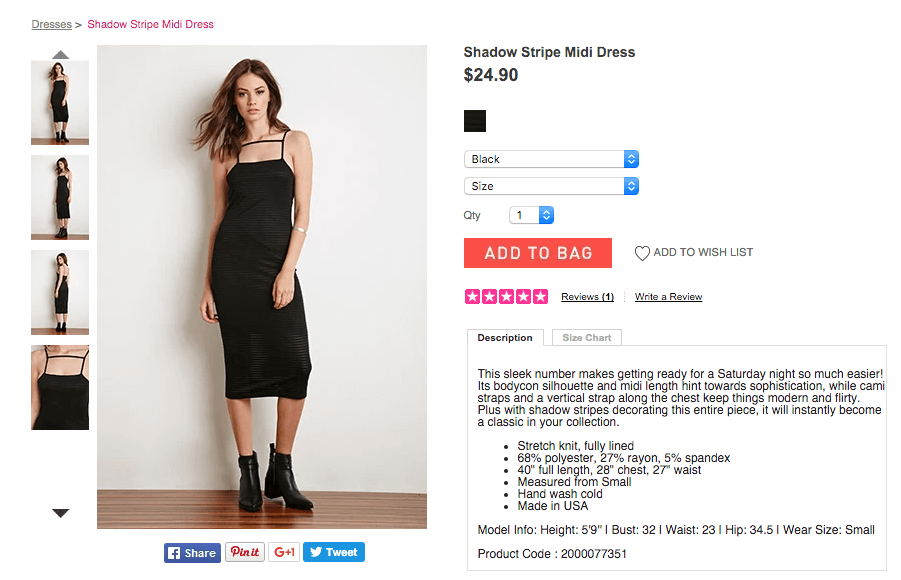
They have an average of 0.1 reviews per product for items listed under “highest rating” in the women’s clothing section. This raises a lot of questions about how “highest rating” is determined. They also have many items listed as “Sold Out” that don’t have any reviews, which means that if they are asking customers for reviews, they aren’t doing it effectively.
They do ask customers to leave reviews and to post photos on Instagram for a chance to be featured on product pages, but the effort is fruitless in many cases, with empty galleries on several pages.
- Reviews on product pages: Yes
- Option to sort by top rated: Yes
- Reviews displayed next to product: Yes
- Avg. reviews per product among top 10 rated: 0.1
- CTA to leave a review: Yes
- Trust badges: No
How to Learn from Successful Fashion Brands’ Mistakes
It’s not enough to just have reviews. You need to take advantage of the power of customer content to drive traffic and sales at every step of the customer journey.
Here are five takeaways from this study to help you improve your review strategy and to stay ahead of the fashion and apparel eCommerce trends in your vertical:
-
- Display reviews prominently. Improve click-through to products by displaying reviews on category pages and increase eCommerce conversion rates by showing off reviews on product pages above the fold. Bonus points if you show off reviews on a photos carousel on your homepage or on your social media channels.
- Display trust badges so shoppers know reviews are verified.
- Shoot for even review distribution – shoppers can get suspicious when they see some products have tons of reviews while others have none. You can do this by targeting review request emails to particular products to help close the gap.
- Always ask customers for reviews after they have made a purchase and received the product. You work hard to make your customers happy, don’t miss out on the opportunity to earn more reviews.
- Give customers the option to sort by top rated so they can easily find products that have lots of great reviews.
For more data, industry benchmarks, and the most important fashion eCommerce trends, check out this report we made in collaboration with Klaviyo.














 Join a free demo, personalized to fit your needs
Join a free demo, personalized to fit your needs